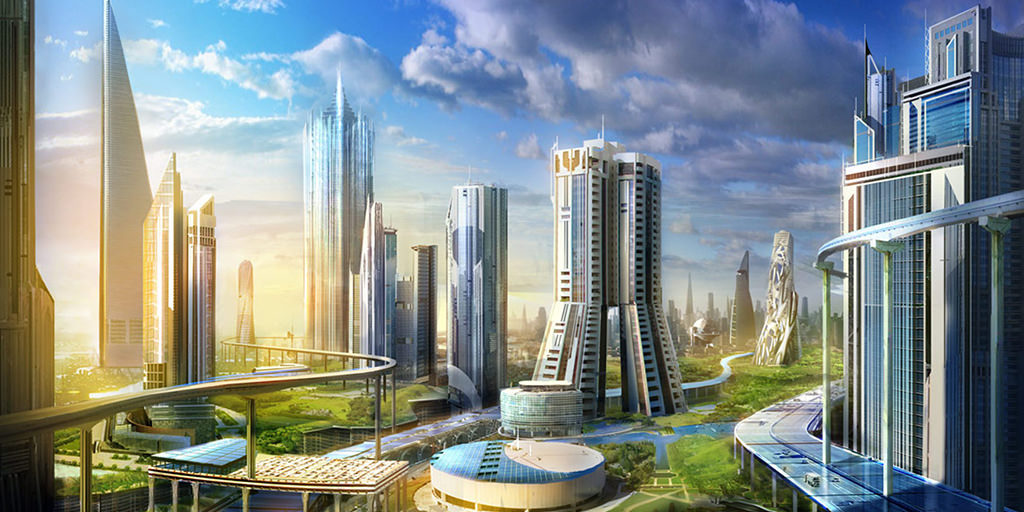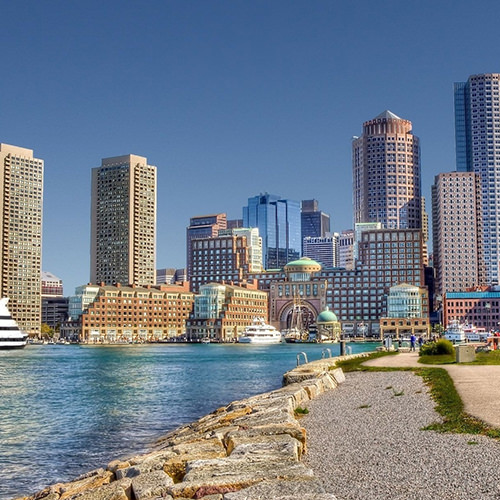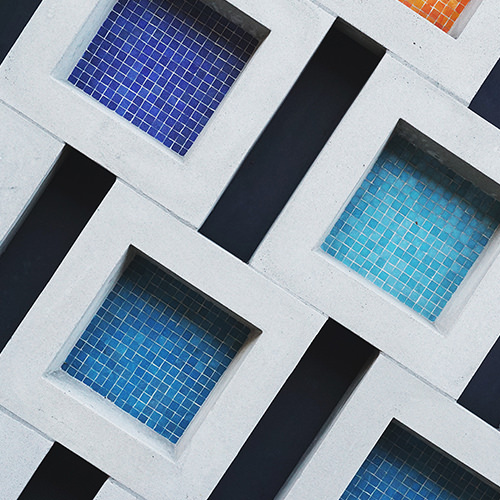We kicked off our Cantina Speaker Series with a handful of our clients, industry leaders, and staff focused on the Internet of Things (IoT) and connected products. This inaugural event featured MIT Media Lab researcher, and author of Enchanted Objects, David Rose. He spoke about the emerging world of AI and IoT through the lens of seven dreams for the future. Rose started off his presentation by explaining that enchanted objects are ordinary things that have the same functionality they had before, except “now they can talk, and they are connected”. He dreams of a future where ordinary things have extraordinary capabilities.
Using this definition, Rose went on to show the audience the seven dreams he has for the future of cities. I’m going to recap these seven key moments from his presentation. If video is more your style, we’ve edited together his presentation with chapters so you can easily find the dream you want to watch.
Mobility Dream
Rose thinks we could see a hybrid between a bike and a car that gets us moving. His work at the MIT Media Lab involves thinking about this problem and what a solution would look like if we blended autonomy with drivability. This video suggests one possibility of what the result might look like:
Rose also advocated for reconfigured road intersections that make biking safe and preferable to driving. To illustrate his point, he showed a video that conceptualizes what an interaction might look like when it’s “smart” for all commuters, not just for bikes or cars. It’s starts with placing an extra curve that follows the line of the intersection curb. This creates space between the driver and biker when turning. Cars are pushed back away from the interaction to allow a dedicated space for pedestrians that is separate from bike lanes.

City Home Dream
Could we imagine a home that conforms to our activities? Rose looks forward to a time when our living spaces are able to hide things we don’t need, in the hope that people can get by with much less space. He provided an example of of a company Ori Systems (which spun out of the MIT Media Lab) operates a compact module that incorporates a bed and a closet on one side, and a home office and an entertainment suite on the other.
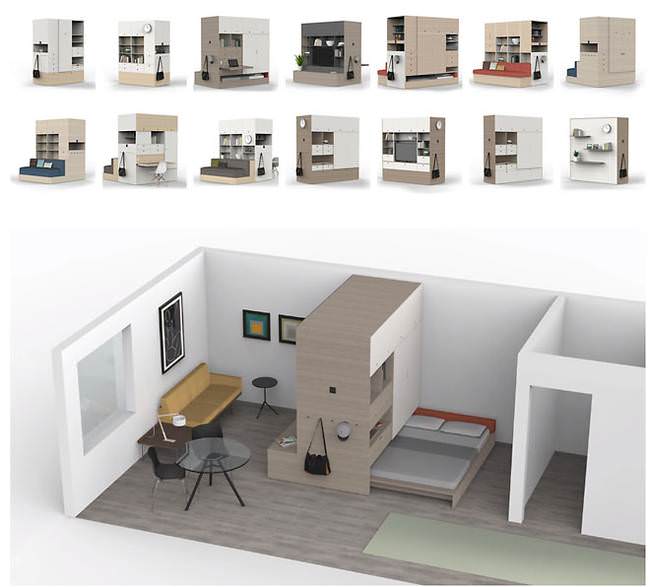
At CES, Hyundai offered their idea of a future home where the car actually blends in with the home. This polished mockup explores this future in detail. While docked with the home, the car is able connect to the home network, physically integrate into the room and fully integrate with the home. The car could share air conditioning duties with the home’s central system, act as extra space for sitting, lounging or sleeping, provide emergency power from its hydrogen fuel cell during outages or even physically move its seats into the room space when the owner has guests over.

Public Spaces Dream
Inspired by a project from Philips LumiMotion, Rose talked about the dream we all have to be acknowledged and be seen by the city. The lights shown below have sensors that let people “follow the light,” as if they were Peter Pan chasing Tinker Bell, by illuminating as you walk by them.
Despite the excitement Pokémon Go created last year about encouraging people to explore the outdoors, Rose thinks it’s not as exciting as it seems, because it still relies on a screen to interact. Rose is more excited about play centers that use sensors to inspire people to play together.
Sharing Economy Dream
Rose’s dream of a sharing economy comes with the increased density of cities, where inhabitants don’t have the space, or desire, to store stuff in a basement or attic. This capability is replaced by companies with service models that let you share goods without the company needing to carry any inventory or take on manufacturing risk. An example of this approach is the car rental company Turo, which allows you to rent a car on demand from a community of local car owners, instead of from a fleet maintained by the company. (This is a future Hyundai is probably less excited about, since they want everyone to be car owners.)
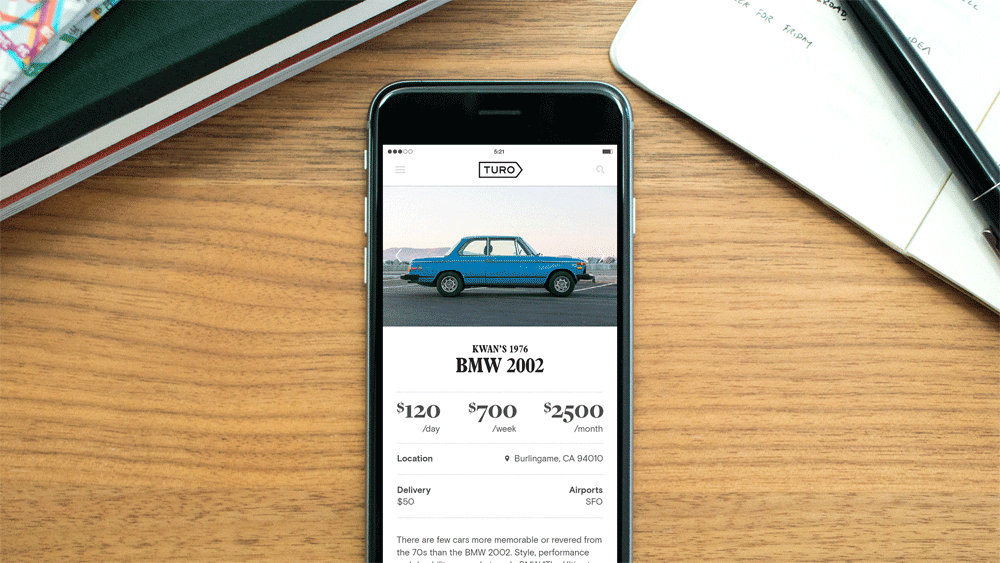
Future of Shopping Dream
In Rose’s dream of shopping, he believes we won’t discover products we want to buy from traditional brick and mortar stores, but instead from photos shared between friends and on social media. We already have a preview of what this future looks like with Ditto Labs, a company Rose founded in 2012. Ditto Labs automatically looks for brands in photos and identifies products, scenes, emotion, brands, and faces so marketers have better analytics on the effectiveness of their social campaigns.
Another example of this future is Rose’s personal experience with the Narrative Camera, a product that logs your day by taking snapshots every few seconds. Not only do you get information on how active you are, but you also see how much time you spent outdoors vs. indoors, who you interacted with, what emotions they conveyed, and so on. Rose showed us what one of his days looked like. Not surprisingly, it involved a lot of meetings.
Camouflage Dream
A new dream, which Rose thinks will become more important as cameras are embedded in everyday products, is the ability to not be seen—to be invisible to technology. The example he offered is a line of clothing that hides a person’s body heat from thermal cameras. He explained that this wish is nothing new: the concept dates back to World War II, when warships were painted to confuse the enemy and disrupt their ability to recognize them.
Play Dream
Rose’s last dream of the future is all about play. Working with Fisher-Price, Rose explored the future of play and parenting, looking for ways to steer children away from screens and toward augmented reality, and working with materials people are familiar with, like felt and wood. This video best showcases what this future might hold for families:
We left inspired by all of the ways IoT technology will improve how cities function and how people live. It was a great time, and we were fortunate to be able to share the night with so many wonderful Boston-based companies, like Putnam Investments, Sonos, Analog Devices and many more. We’ll be announcing our next speaker in a month or so, so keep an eye out for that.
Why Does Cantina Do IoT?
The interface between humans and Internet of Thing devices is a promising and valuable aspect of this emerging technology. Strong user experience, coupled with effective service design and technical sophistication, is required to build compelling, usable and secure IoT products and services. If you are creating an IoT solution, you’ll need a broad range of skills, information and resources.
To create a successful IoT product, you need to start to focus on key elements of the experience. This includes user experience, service design, strategy and user research, and testing. You need a partner to help you cover the complete IoT development and deployment landscape, from conception to completion. Cantina is here to help.
We partnered with LINK AKC to design and build the iOS and Android mobile experience to strengthen the bond between dog owners and their best friends. Click on the banner to learn about the project.
How can Cantina help you get started With IoT?
IoT workshops
You know that you need to bring an IoT product to market, but you’re not sure where to get started. A one day IoT Workshop will help you clarify your goals and get a handle on what resources and time you’ll need to get moving, and ultimately, to deliver.
Product Feature Definitions
Creating IoT products and services is challenging: you need information to guide your decision making. Solid research on markets, competition, business models and technical feasibility help craft a solution to bring the right product to market.
Product Design research
Working agile is great, but you still need a plan. Having a service blueprint and a curated backlog of features gives you a foundation to move ahead.
Design Sprints
Design sprints are a fast, effective way to answer questions, prototype concepts, and test solutions: they produce answers in just a week. They are an ideal way to rapidly evolve your IoT project.
